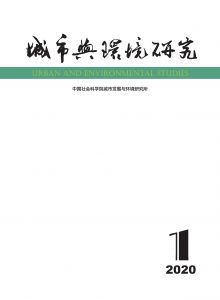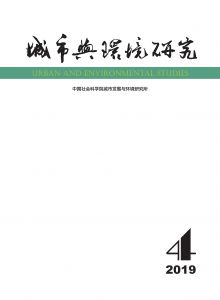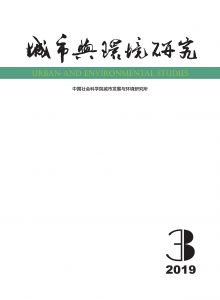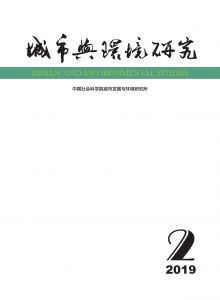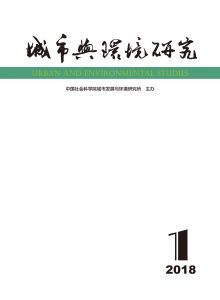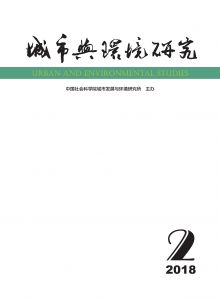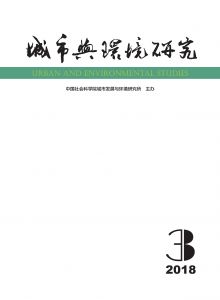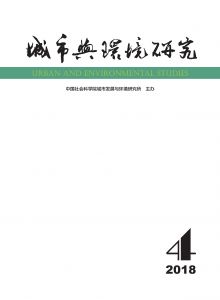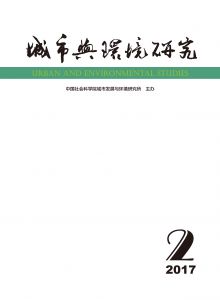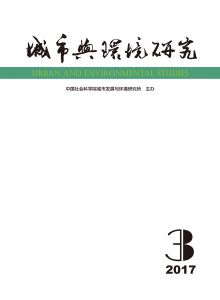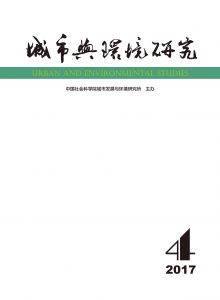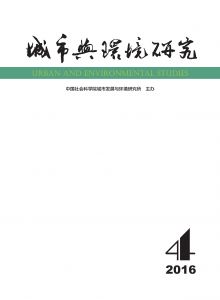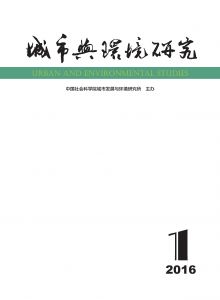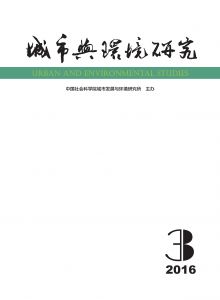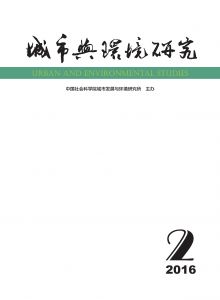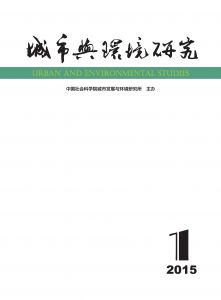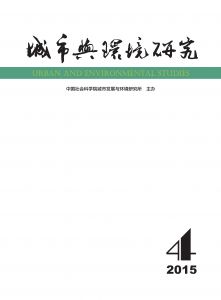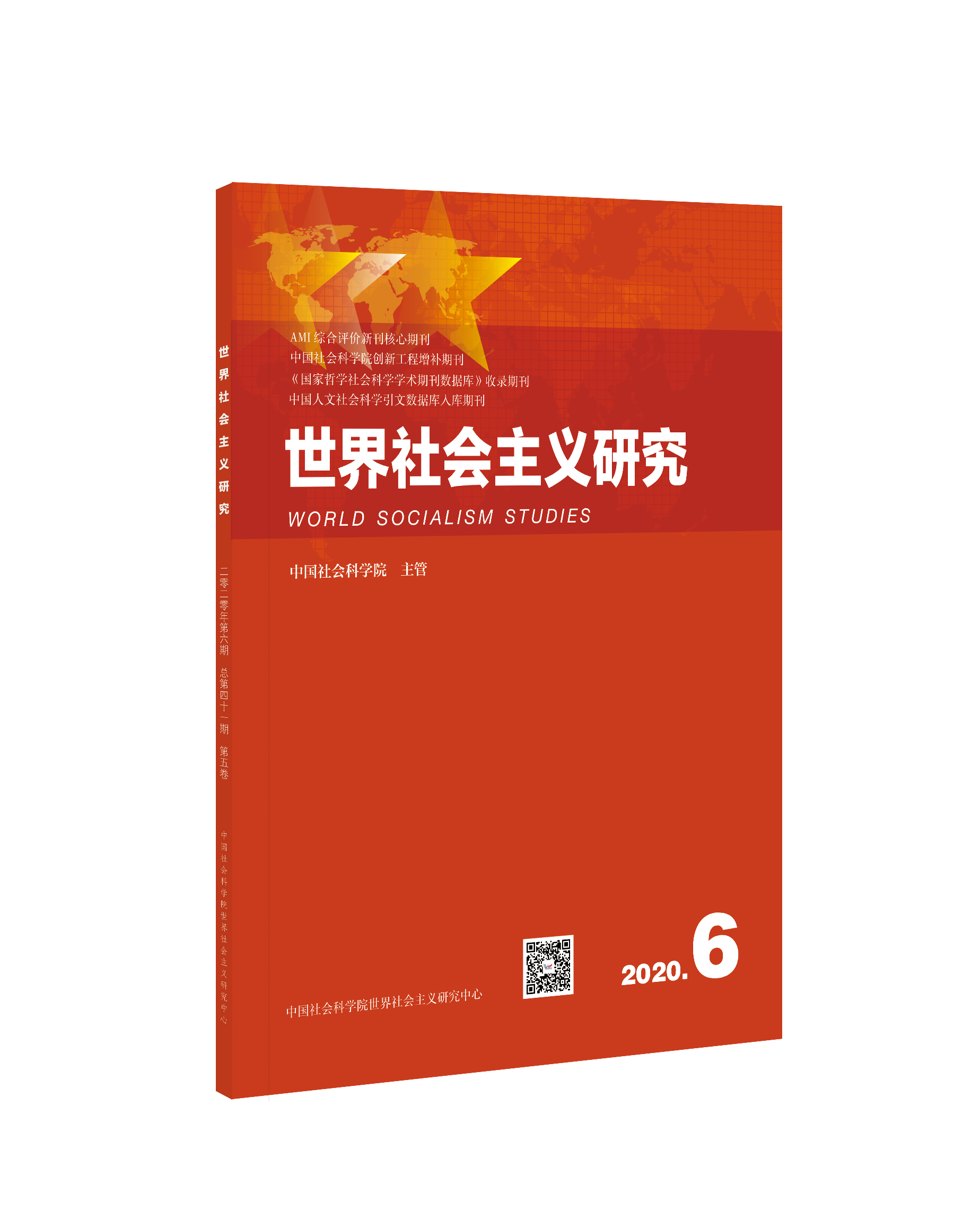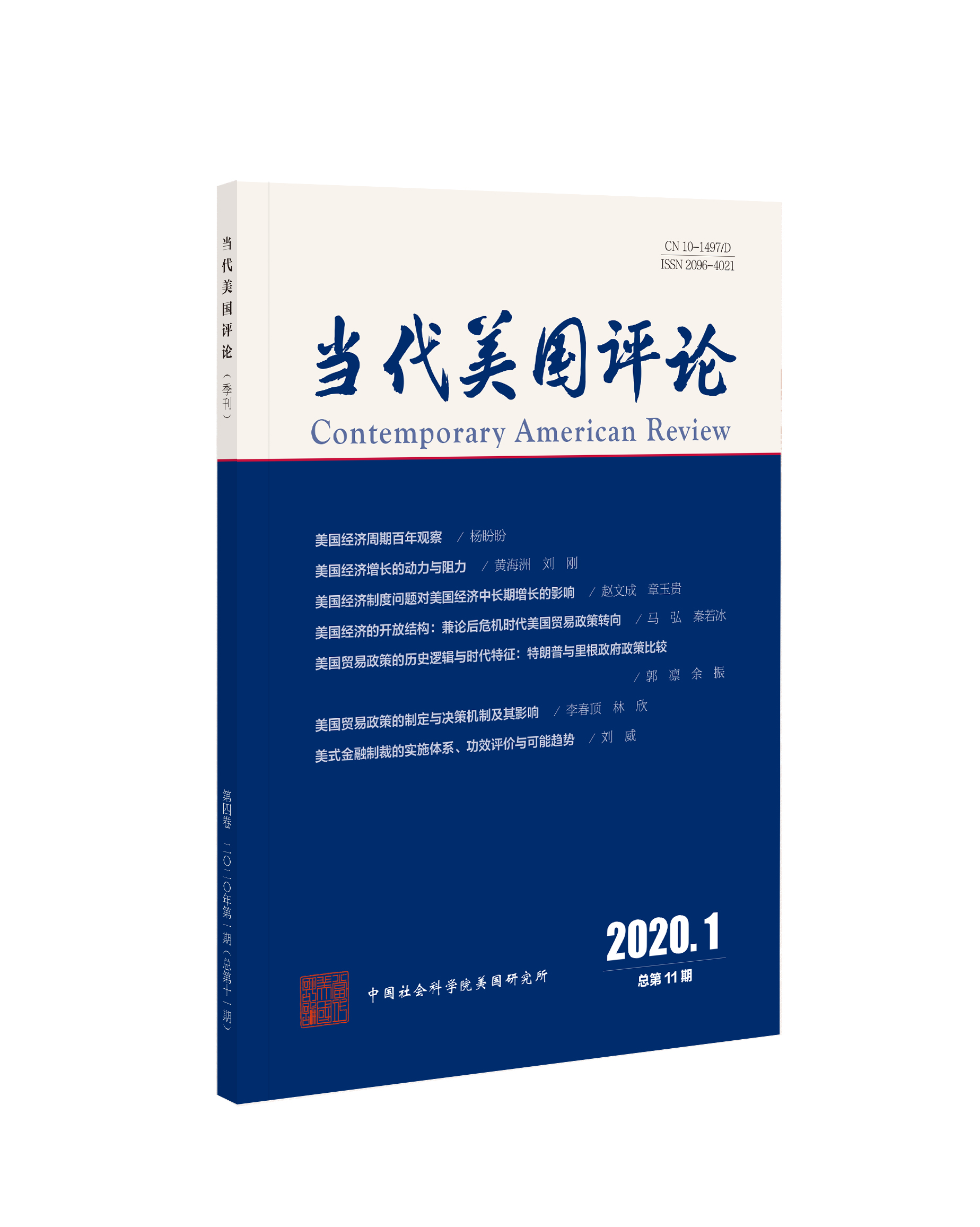最新期刊
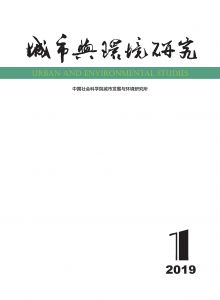
目录
过往期刊
参考文献
-
编委会
-
·名家论坛·
-
范式转型再构城市体系的几点思考
-
-
·学术论文·
-
违法排污视角下京津冀工业颗粒物排放研究
-
东北地区经济高质量发展研究
-
撤县设区是否提高了城市公共服务水平?
-
中国陆地边境县域旅游竞争力的类型划分及特征分析
-
-
·学术综述·
-
温室气体减排的健康协同效应:综述与展望
-
气候变化计量经济学方法研究进展
-
-
第二届城市和公共政策国际学术研讨会征文启事
-
投稿须知
-
版权页
按年份浏览:
- 全部
- 2020
- 2019
- 2018
- 2017
- 2016
- 2015
- 2014
[1][1][美]保罗·克鲁格曼(2000):《地理和贸易》,张兆杰译,北京:北京大学出版社、中国人民大学出版社。
[2][2]丁成日(2015):《世界巨(特)大城市发展——规律、挑战、增长控制及其评价》,北京:中国建筑工业出版社。
[3][3]傅崇兰、白晨曦、曹文明等(2009):《中国城市发展史》,北京:社会科学文献出版社。
[4][4]黄群慧(2017):《中国工业化进程及其对全球化的影响》,《中国工业经济》第6期,第26~30页。
[5][5]靳友成(2009):《我国历史上的告老还乡制度》,《中国人大》第15期,第50页。
[6][6]刘兴国(2018):《剖析2018中国企业500强》,《企业管理》第9期,第6~10页。
[7][7]倪鹏飞、侯庆虎、李超等(2015):《中国城市竞争力报告(No.13)》,北京:社会科学文献出版社。
[8][8]潘家华(2018):《从生态失衡迈向生态文明:改革开放40年中国绿色转型发展的进程与展望》,《城市与环境研究》第4期,第3~16页。
[9][9]庞菲菲(2007):《鼓浪屿居住建筑的时序断面的特征研究》,西安:西安建筑科技大学硕士学位论文。
[10][10][日]藤田昌久、[美]保罗·克鲁格曼、[英]安东尼·维纳布尔斯(2013):《空间经济学:城市、区域与国际贸易》,梁琦译,北京:中国人民大学出版社。
[11][11]徐梅(2002):《当代西方区域经济理论评析》,《经济评论》第3期,第44~47页。
[12][12]张文忠(2003):《新经济地理学的研究视角探析》,《地理科学进展》第1期,第94~102页。
[13][13]Dixit,A. K. and J. E. Stiglitz(1977),“Monopolistic Competition and Optimum Product Diversity”,American Economic Review ,67(3),pp.297-308.
[14][14]European Commission(2015),Towards an EU Research and Innovation Policy Agenda for Nature-Based Solutions & Re-Naturing Cities ,Final Report of the Horizon 2020.
[15][15]Krugman,P.(1991),“Increasing Returns and Economic Geography”,The Journal of Political Economy ,99(3),pp.483-499.
[16][16]Marshall,A.(1920),Principles of Economics ,London:MacMillan.
[17][17]包群、邵敏、杨大利(2013):《环境管制抑制了污染排放吗?》,《经济研究》第12期,第42~54页。
[18][18]伯鑫、徐峻、杜晓惠等(2017):《京津冀地区钢铁企业大气污染影响评估》,《中国环境科学》第5期,第1684~1692页。
[19][19]第一次全国污染源普查资料编纂委员会编(2011):《污染源普查产排污系数手册》,北京:中国环境科学出版社。
[20][20]段文娇、郎建垒、程水源等(2018):《京津冀地区钢铁行业污染物排放清单及对PM2.5 影响》,《环境科学》第4期,第1445~1454页。
[21][21]何燕(2010):《析中国环境执法的现状与完善》,《中国人口·资源与环境》第5期,第146~150页。
[22][22]环境保护部办公厅(2016):《关于通报钢铁行业环境保护专项执法检查情况的函》,http://www.mep.gov.cn/gkml/hbb/bgth/201610/t20161009_365150.htm[2018-10-19]。
[23][23]环境保护部办公厅(2018):《关于砖瓦行业环保专项执法检查开展情况的通报》,http://www.mee.gov.cn/gkml/hbb/bgth/201801/t20180115_429715.htm[2018-10-19]。
[24][24]雷宇、贺克斌、张强等(2008):《基于技术的水泥工业大气颗粒物排放清单》,《环境科学》第8期,第2366~2371页。
[25][25]李玉红(2018):《中国工业污染的空间分布与治理研究》,《经济学家》第9期,第59~65页。
[26][26]刘海猛、方创琳、黄解军等(2018):《京津冀城市群大气污染的时空特征与影响因素解析》,《地理学报》第1期,第177~191页。
[27][27]彭向刚、向俊杰(2013):《论生态文明建设视野下农村环保政策的执行力——对“癌症村”现象的反思》《中国人口·资源与环境》第7期,第13~21页。
[28][28]秦虎、张建宇(2006):《中美环境执法与经济处罚的比较分析》,《环境科学研究》第2期,第75~81页。
[29][29]田刚、王凡、束韫等(2014):《京津冀水泥工业大气污染状况研究》,《中国水泥》第6期,第68~70页。
[30][30]汪旭颖、燕丽、雷宇等(2016):《我国钢铁工业一次颗粒物排放量估算》,《环境科学学报》第8期,第3033~3039页。
[31][31]王桂林、杨昆、杨扬(2017):《京津冀地区不透水表面扩张对PM2.5 污染的影响研究》,《中国环境科学》第7期,第2470~2481页。
[32][32]王彦超、蒋春来、贺晋瑜等(2018):《京津冀及周边地区水泥工业大气污染控制分析》,《中国环境科学》第10期,第3683~3688页。
[33][33]王跃思、姚利、刘子锐等(2013):《京津冀大气霾污染及控制策略思考》,《中国科学院院刊》第3期,第353~363页。
[34][34]薛亦峰、曲松、闫静等(2014):《北京市水泥工业大气污染物排放清单及污染特征》,《环境科学与技术》第1期,第201~204页。
[35][35]杨朝飞(2012):《环境污染损害鉴定与评估是根治“违法成本低和守法成本高”顽疾的重要举措》,《环境保护》第5期,第18~24页。
[36][36]张航(2018):《整治“散乱污”6万家,督办环境问题2万个,“史上最强”环保督查什么样?》,《北京晚报》1月18日。
[37][37]张强、Z. Klimont、D. G. Streets等(2006):《中国人为源颗粒物排放模型及2001年排放清单估算》,《自然科学进展》第16期,第223~231页。
[38][38]周曙东、欧阳纬清、葛继红(2017):《京津冀PM2.5 的主要影响因素及内在关系研究》,《中国人口·资源与环境》第4期,第102~109页。
[39][39]Cao,G. L.,X. Y. Zhang and S. L. Gong,et al.(2011),“Emission Inventories of Primary Particles and Pollutant Gases for China”,Chinese Science Bulletin ,56(8),pp.781-788.
[40][40]Shimshack,J. P.(2014),“The Economics of Environmental Monitoring and Enforcement”,Annual Review of Resource Economics ,(6),pp. 339-360.
[41][41]Tilt,B.(2007),“The Political Ecology of Pollution Enforcement in China:A Case from Sichuan’s Rural Industrial Sector”,The China Quarterly ,192,pp.915-932.
[42][42]Zhang,Q.,D. G. Streets and G. R. Carmichael,et al.(2009),“Asian Emissions in 2006 for the NASA INTEX-B Mission”,Atmospheric Chemistry and Physics ,(9),pp. 4081-4139.
[43][43]安树伟(2015):《“一带一路”对我国区域经济发展的影响及格局重塑》,《经济问题》第4期,第1~4页。
[44][44]安树伟、肖金成(2016):《区域发展新空间的逻辑演进》,《改革》第8期,第45~53页。
[45][45]蔡之兵(2018):《如何实现高质量区域协调发展新格局》,《经济》第8期,第96~98页。
[46][46]陈耀(2015):《东北困局下“扩大开放合作”大文章怎么做》,《人民论坛》第24期,第43~45页。
[47][47]方创琳、鲍超、马海涛(2016):《2016中国城市群发展报告》,北京:科学出版社,第166~168页。
[48][48]高雁鹏、袁家冬(2016):《2003年以来东北地区人口城镇化水平的综合测度及格局演化》,《经济地理》第12期,第44~50页。
[49][49]郭付友、李诚固、陈才等(2015):《2003年以来东北地区人口城镇化与土地城镇化时空耦合特征》,《经济地理》第9期,第49~56页。
[50][50]郭连强、梁启东、王爱新等(2017):《中国东北地区发展报告(2017)》,北京:社会科学文献出版社,第52~58页。
[51][51]国家发展改革委经济研究所课题组(2019):《推动经济高质量发展研究》,《宏观经济研究》第2期,第5~17、91页。
[52][52]贾占华、谷国锋(2016):《东北地区人口分布的时空演变特征及影响因素》,《经济地理》第12期,第60~68页。
[53][53]金碚(2018):《关于“高质量发展”的经济学研究》,《中国工业经济》第4期,第5~18页。
[54][54]李崇峰(2017):《辽中南城市群城市功能定位研究:基于区域协调发展的视角》,沈阳:东北大学出版社,第105~107页。
[55][55]廉晓梅、吴金华(2018):《东北地区人口与经济空间格局演变分析》,《人口学刊》第1期,第45~55页。
[56][56]刘志敏、修春亮、魏冶等(2017):《1990~2010年东北地区人口变化的空间格局及影响因素》,《西北人口》第5期,第19~26页。
[57][57]马克(2015):《哈长城市群的空间演化研究》,北京:社会科学文献出版社,第162~202页。
[58][58]孟延春、谷浩(2017):《中国四大板块区域城镇化路径分析:以县(市)行政区划调整为例》,《城市发展研究》第10期,第54~60页。
[59][59]戚伟、刘盛和、金凤君(2017):《东北三省人口流失的测算及演化格局研究》,《地理科学》第12期,第1795~1804页。
[60][60]任保平、李禹墨(2018):《新时代我国高质量发展评判体系的构建及其转型路径》,《陕西师范大学学报(哲学社会科学版)》第3期,第105~113页。
[61][61]邵汉明等(2016):《2017年吉林经济社会形势分析与预测》,北京:社会科学文献出版社,第64页。
[62][62]宋艳、李勇(2014):《老工业基地振兴背景下东北地区城镇化动力机制及策略》,《经济地理》第1期,第47~53页。
[63][63]孙久文(2018):《从高速度的经济增长到高质量、平衡的区域发展》,《区域经济评论》第1期,第1~4页。
[64][64]孙平军、修春亮、董超(2013):《东北地区经济空间极化及其驱动因子的定量研究》,《人文地理》第1期,第87~93页。
[65][65]谭俊涛、张平宇(2013):《“振兴东北”前后区域经济重心格局演变分析》,《地理与地理信息科学》第6期,第68~72页。
[66][66]王姣娥、杜德林(2016):《东北振兴以来地区经济发展水平演化及空间分异模式》,《地理科学》第9期,第1320~1328页。
[67][67]王一鸣、陈昌荣等(2018):《高质量发展:宏观经济形势展望与打好三大攻坚战》,北京:中国发展出版社,第48~61页。
[68][68]王永昌、尹江燕(2019):《论经济高质量发展的基本内涵及趋向》,《浙江学刊》第1期,第91~95页。
[69][69]王战、王振等(2016):《上海2050:发展愿景》,上海:上海社会科学院出版社,第90~92页。
[70][70]魏后凯(2007):《大都市区新型产业分工与冲突管理》,《中国工业经济》第2期,第28~34页。
[71][71]吴殿廷、赵林、王永明等(2017):《辽宁经济地理》,北京:经济管理出版社,第23页。
[72][72]姚士谋、周春山、王德等(2016):《中国城市群新论》,北京:科学出版社,第278页。
[73][73]于婷婷、宋玉祥、浩飞龙等(2017):《东北三省人口分布空间格局演化及其驱动因素研究》,《地理科学》第5期,第709~717页。
[74][74]赵弘、游霭琼、杨维凤等(2017):《中国区域经济发展报告(2016—2017)》,北京:社会科学文献出版社,第37、279页。
[75][75]朱宇、王爱新、王刚等(2018):《黑龙江经济发展报告(2018)》,北京:社会科学文献出版社,第31页。
[76][76]祝滨滨、吴明东、杜磊(2016):《东北地区新型城镇化建设的四个着力点》,《经济纵横》第2期,第60~63页。
[77][77]邹东涛、王再文(2016):《中国经济发展和体制改革报告(No.7):确保全面深化改革落地生根(2016)》,北京:社会科学文献出版社,第114页。
[78][78]陈淑云、曾龙(2016):《土地财政依赖与公共服务供给水平——基于全国286个地级及以上城市面板数据的研究》,《华中师范大学学报(人文社会科学版)》第4期,第42~53页。
[79][79]何韵文、郭符林(2017):《浅析撤县设区与地方教育支出增长——基于合成控制法的研究》,《当代经济》第22期,第122~126页。
[80][80]贾俊雪、宁静(2015):《治理结构与地方政府职能优化——基于省直管县财政体制改革的拟自然实验分析》,《管理世界》第1期,第7~17页。
[81][81]刘佳、吴建南、吴佳顺(2012):《省直管县改革对县域公共物品供给的影响——基于河北省136县(市)面板数据的实证分析》,《经济社会体制比较》第1期,第35~45页。
[82][82]刘叔申、吕凯波(2012):《“省直管县”财政改革的公共卫生服务水平提升效应——基于江苏省2004~2009年县级面板数据的分析》,《财政金融研究》第4期,第67~71页。
[83][83]柳拯、汤恒、吴国生等(2017):《新型城镇化过程中行政区划调整的实施效果——对重庆市撤县改区的调研报告》,《理论视野》第7期,第74~78页。
[84][84]卢盛峰、陈思霞(2016):《政策偏袒的经济收益:来自中国工业企业出口的证据》,《金融研究》第7期,第33~46页。
[85][85]刘修岩(2014):《空间效率与区域平衡:对中国省级层面集聚效应的检验》,《世界经济》第1期,第55~80页。
[86][86]刘瑞明、赵仁杰(2015):《西部大开发:增长驱动还是政策陷阱——基于PSM-DID方法的研究》,《中国工业经济》第6期,第32~43页。
[87][87]李斌、金秋宇、卢娟(2018):《土地财政、新型城镇化对公共服务的影响》,《首都经济贸易大学学报》第4期,第69~78页。
[88][88]宁静、赵国钦、贺俊程(2015):《省直管县财政体制改革能否改善民生性公共服务》,《经济理论与经济管理》第5期,第77~87页。
[89][89]秦蒙、刘修岩、李松林(2016):《中国的“城市蔓延之谜”——来自政府行为视角的空间面板数据分析》,《经济学动态》第7期,第21~33页。
[90][90]谭之博、周黎安、赵岳(2015):《省管县改革、财政分权与民生——基于“倍差法”的估计》,《经济学(季刊)》第3期,第1093~1114页。
[91][91]汤玉刚、陈强、满利苹(2015):《资本化、财政激励与地方公共服务提供——基于我国35个大中城市的实证分析》,《经济学(季刊)》第1期,第218~240页。
[92][92]唐为、王媛(2015):《行政区划调整与人口城市化——来自撤县设区的经验证据》,《经济研究》第9期,第72~85页。
[93][93]魏后凯(2014):《中国城镇化进程中两极化倾向与规模格局重构》,《中国工业经济》第3期,第18~30页。
[94][94]王德祥、李建军(2008):《人口规模、省直管县对地方公共品供给的影响——来自湖北省市县两级数据的经验证据》,《统计研究》第12期,第15~21页。
[95][95]万海远、李实(2013):《户籍歧视对城乡收入差距的影响》,《经济研究》第9期,第43~55页。
[96][96]夏怡然、陆铭(2015):《城市间的“孟母三迁”——公共服务影响劳动力流向的经验研究》,《管理世界》第10期,第78~90页。
[97][97]叶林、杨宇泽(2017):《中国城市行政区划调整的三重逻辑:一个研究述评》,《公共行政评论》第4期,第158~196页。
[98][98]赵聚军(2012):《公共服务:行政区划调整中应予关注的一个基本变量》,《中共天津市委党校学报》第3期,第54~60页。
[99][99]赵勇、刘金凤、张倩(2017):《东北振兴战略是否促进了经济结构调整?——基于PSM-DID方法的研究》,《城市与环境管理》第4期,第27~46页。
[100][100]赵勇、魏后凯(2015):《政府干预、城市群空间功能分工与地区差距——兼论中国区域政策的有效性》,《管理世界》第8期,第14~29页。
[101][101]Henderson,J. V.,J. R. Logan and S. Choi(2005),“Growth of China’s Medium-Size City[with Comments]”,Brookings-Wharton Papers on Urban Affairs ,(6),pp.263-303.
[102][102]Rosenbaum,P. R. and D. B. Rubin(1983),“The Central Role of the Propensity Score in Observational Studies for Causal Effects”,Biometrika ,70(1),pp.41-55.
[103][103]Wang,W.,X.Zheng and Z.Zhao(2011),“Fiscal Reform and Public Education Spending:A Quasi-natural Experiment of Fiscal Decentralization in China”,The Journal of Federalism ,42(2),pp.334-356.
[104][104]陈桂秋(2004):《论中国边境旅游发展的战略意义》,《华东经济管理》第2期,第36~38页。
[105][105]董锁成、李雪、张广海等(2009):《城市群旅游竞争力评价指标体系与测度方法探讨》,《旅游学刊》第2期,第30~36页。
[106][106]冯学钢、杨勇、于秋阳(2012):《中国旅游产业潜力和竞争力研究》,上海:上海交通大学出版社。
[107][107]封志明、唐焰、杨艳昭等(2007):《中国地形起伏度及其与人口分布的相关性》,《地理学报》第10期,第1073~1082页。
[108][108]金凤君、王成金、李秀伟(2008):《中国区域交通优势的甄别方法及应用分析》,《地理学报》第8期,第787~798页。
[109][109]李经龙、郑淑婧(2006):《中国品牌旅游资源空间布局研究》,《资源科学》第1期,第174~179页。
[110][110]时雨晴、钟林生、陈田(2014):《中国陆地边境县域旅游竞争力评价》,《资源科学》第6期,第1133~1141页。
[111][111]宋涛、刘卫东、李玏(2016):《国外对地缘视野下边境地区的研究进展及其启示》,《地理科学进展》第3期,第276~285页。
[112][112]Knowles,R.D. and C. W.Matthiessen (2009),“Barrier Effects of International Borders on Fixed Link Traffic Generation:The Case of Øresundsbron”,Journal of TransportGeography ,17(3),pp.155-165.
[113][113]Martinez,O.(1994),The Dynamics of Border Interaction:New Approaches to Border Analysis ,London:Routledge.
[114][114]Prideaux,B.(2005),“Factors Affecting Bilateral Tourism Flows”,Annals of Tourism Research ,32(3),pp.780-801.
[115][115]Timothy,D. J.(1995),“Political Boundaries and Tourism:Borders as Tourist Attraction”,Tourism Management ,16(7),pp.525-532.
[116][116]Timothy,D. J. and C.Tosun(2003),“Tourists’ Perceptions of the Canada-USA Border as a Barrier to Tourism at the International Peace Garden”,Tourism Management ,24(4),pp.411-421.
[117][117]马丁(2015):《中国碳排放达峰路径模型体系构建与应用》,北京:清华大学核能与新能源技术研究院博士论文。
[118][118]梅强、陆玉梅(2007):《人的生命价值评估方法述评》,《中国安全科学学报》第3期,第56~61页。
[119][119]秦雪征、刘阳阳、李力行(2010):《生命的价值及其地区差异:基于全国人口抽样调查的估计》,《中国工业经济》第10期,第33~43页。
[120][120]钱颖骏、李石柱、王强等(2010):《气候变化对人体健康影响的研究进展》,《气候变化研究进展》第4期,第241~247页。
[121][121]祁毓、卢洪友(2015):《污染、健康与不平等——跨越“环境健康贫困”陷阱》,《管理世界》第9期,第32~51页。
[122][122]Anenberg,S.C.,J.Schwartz and D.Shindell,et al.(2012),“Global Air Quality and Health Co-benefits of Mitigating Near-term Climate Change through Methane and Black Carbon Emission Controls”,Environmental Health Perspectives ,120(6),pp.831-839.
[123][123]Ansolabehere,S. and D.M.Konisky(2014),Cheap and Clean:How Americans Think about Energy in the Age of Global Warming ,The MIT Press.
[124][124]Aunan,K.,J.Fang and T.Hu,et al.(2006),“Climate Change and Air Quality—Measures with Co-benefits in China”,Environmental Science and Technology ,40(16),pp.4822-4829.
[125][125]Balbus,J.M.,J.B.Greenblatt and R.Chari,et al.(2014),“A Wedge-based Approach to Estimating Health Co-benefits of Climate Change Mitigation Activities in the United States”,Climatic Change ,127(2),pp.199-210.
[126][126]Bauer,N.,I.Mouratiadou and G.Luderer,et al.(2016),“Global Fossil Energy Markets and Climate Change Mitigation—An Analysis with REMIND”,Climatic Change ,136(1),pp.69-82.
[127][127]Bey,I.,D.J.Jacob and R.M.Yantosca,et al.(2001),“Global Modeling of Tropospheric Chemistry with Assimilated Meteorology:Model Description and Evaluation”,Journal of Geophysical Research:Atmospheres ,106(D19),pp.23073-23095.
[128][128]Bouwman,A.F.,T.Kram and K.K.Goldewijk(2006),“Integrated Modelling of Global Environmental Change:An Overview of IMAGE 2.4”,Iubmb Life ,63(9),p.2.
[129][129]Bradbury,K.R.,M.A.Borchardt and M.Gotkowitz,et al.(2013),“Source and Transport of Human Enteric Viruses in Deep Municipal Water Supply Wells”,Environmental Science & Technology ,47(9),pp.4096-4103.
[130][130]Buonocore,J.,P.Luckow and G.Norris,et al.(2015),“Health and Climate Benefits of Different Energy-efficiency and Renewable Energy Choices”,Nature Climate Change ,6(1),pp.100-105.
[131][131]Burnett,R.T.,C.A.Pope and M.Ezzati,et al.(2014),“An Integrated Risk Function for Estimating the Global Burden of Disease Attributable to Ambient Fine Particulate Matter Exposure”,Environmental Health Perspectives ,122(4),pp.397-403.
[132][132]Bustinza,R.,G.Lebel and P.Gosselin,et al.(2013),“Health Impacts of the July 2010 Heat Wave in Québec,Canada”,BMC Public Health ,13(1),p.56.
[133][133]Cai,W.,J.Hui and C.Wang,et al.(2018),“The Lancet Countdown on PM2.5 Pollution-related Health Iimpacts of China’s Projected Carbon Dioxide Mitigation in the Electric Power Generation Sector under the Paris Agreement:A Modelling Study”,The Lancet Planetary Health ,2(4),pp.e151-e161.
[134][134]Chen,S. and L.He(2014),“Welfare Loss of China’s PM2.5 Pollution:How to Design Personal Vehicle Transportation Policy”,China Economic Review ,31,pp.106-118.
[135][135]Cheng,B.,H.Dai and P.Wang,et al.(2016),“Impacts of Low-carbon Power Policy on Carbon Mitigation in Guangdong Province,China”,Energy Policy ,88,pp.515-527.
[136][136]Cheng,J.J. and P.Berry (2013),“Health Co-benefits and Risks of Public Health Adaptation Strategies to Climate Change:A Review of Current Literature”,International Journal of Public Health ,58,pp.305-311.
[137][137]Chowdhury,S. and S.Dey(2016),“Cause-specific Premature Death from Ambient PM2.5 Exposure in India:Estimate Adjusted for Baseline Mortality”,Environment International ,91,pp.283-290.
[138][138]Cohen,A.J.,M.Brauer and R.Burnett,et al.(2017),“Estimates and 25-year Trends of the Global Burden of Disease Attributable to Ambient Air Pollution:An Analysis of Data from the Global Burden of Diseases Study 2015”,The Lancet ,389(10082),pp.1907-1918.
[139][139]Crawford-Brown,D.,T.Barker and A.Anger,et al.(2012),“Ozone and PM Related Health Co-benefits of Climate Change Policies in Mexico”,Environmental Science & Policy ,17,pp.33-40.
[140][140]Crawford-Brown,D.,P.C.Chen and H.C.Shi,et al.(2013),“Climate Change Air Toxic Co-reduction in the Context of Macroeconomic Modelling”,Journal of Environmental Management ,125(1),pp.1-6.
[141][141]Deng,H.M.,Q.M.Liang and L.J.Liu,et al.(2017),“Co-benefits of Greenhouse Gas Mitigation:A Review and Classification by Type,Mitigation Sector,and Geography”,Environmental Research Letters ,12,pp.1-26.
[142][142]Doherty,R.M.,M.R.Heal and F.M.O’Connor,et al.(2017),“Climate Change Impacts on Human Health over Europe through Its Effect on Air Quality”,Environmental Health ,16(1),p.118.
[143][143]Driscoll,C.T.,J.J.Buonocore and J.I.Levy,et al.(2015),“US Power Plant Carbon Standards and Clean Air and Health Co-benefits”,Nature Climate Change ,5(6),pp.535-540.
[144][144]Fiore,A.,V.Naik and E.Leibensperger(2015),“Air Quality and Climate Connections”,Journal of the Air & Waste Management Association ,65(6),pp.645-685.
[145][145]Garcia-Menendez,F.,R.K.Saari and E.Monier,et al.(2015),“U.S.Air Quality and Health Benefits from Avoided Climate Change under Greenhouse Gas Mitigation”,Environmental Science & Technology ,49(13),pp.7580-7588.
[146][146]Gilmore,E.A.,J.Apt and R.Walawalkar,et al.(2010),“The Air Quality and Human Health Effects of Integrating Utility-scale Batteries into the New York State Electricity Grid”,Journal of Power Sources ,195(8),pp.2405-2413.
[147][147]Gover,M.(1938),“Mortality During Periods of Excessive Temperature”,Public Health Rep ,53,pp.1122-1143.
[148][148]Haines,A.,A.J.Mcmichael and K.R.Smith,et al.(2009),“Public Health Benefits of Strategies to Reduce Greenhouse-gas Emissions:Overview and Implications for Policy Makers”,The Lancet ,374(9707),pp.2104-2114.
[149][149]Hansen,J.,P.Kharecha and M.Sato,et al.(2013),“Assessing‘Dangerous Climate Change’:Required Reduction of Carbon Emissions to Protect Young People,Future Generations and Nature”,Plos One ,8(12),p.e81648.
[150][150]Hui,J.,W.Cai and C.Wang,et al.(2017),“Analyzing the Penetration Barriers of Clean Generation Technologies in China’s Power Sector Using a Multi-region Optimization Model”,Applied Energy ,185,pp.1809-1820.
[151][151]Keatinge,W.R. and G.C.Donaldson(2004),“The Impact of Global Warming on Health and Mortality”,Southern Medical Journal ,97(11),pp.1093-1099.
[152][152]Kolstad,E.W. and K.A.Johansson (2011),“Uncertainties Associated with Quantifying Climate Change Impacts on Human Health”,Environmental Health Perspectives ,119(3),pp.299-305.
[153][153]Landrigan,P.J.,R.Fuller and N.J.R. Acosta,et al.(2017),“The Lancet Commission on Pollution and Health”,Lancet ,391(10119),pp.462-512.
[154][154]Lanzi,E.,R.Dellink and J.Chateau(2018),“The Sectoral and Regional Economic Consequences of Outdoor Air Pollution to 2060”,Energy Economics ,71,pp.89-113.
[155][155]Li,M.,S.Zhang and F.Garcia-Menendez,et al.(2017),“Climate Penalty on Air Quality and Human Health in China and India”,American Geophysical Union,Fall Meeting .
[156][156]Liu,M.,Y.Huang and Z.Jin,et al.(2017),“Estimating Health Co-benefits of Greenhouse Gas Reduction Strategies with a Simplified Energy Balance Based Model:The Suzhou City Case”,Journal of Cleaner Production ,142(4),pp.3332-3342.
[157][157]Markandya,A.,B.G.Armstrong and S.Hales,et al.(2009),“Public Health Benefits of Strategies to Reduce Greenhouse-gas Emissions:Low-carbon Electricity Generation”,The Lancet ,374(9706),pp.2006-2015.Markandya,A.,J.Sampedro and S.J.Smith,et al.(2018),“Health Co-benefits from Air Pollution and Mitigation Costs of the Paris Agreement:A Modelling Study”,Lancet Planet Health ,2,pp.e126-e133.
[158][158]Mao,X.,S.Yang and Q.Liu,et al.(2012),“Achieving CO2 Emission Reduction and the Co-benefits of Local Air Pollution Abatement in the Transportation Sector of China”,Environmental Science & Policy ,21,pp.1-13.
[159][159]Matthews,T.K.R.,R.L.Wilby and C.Murphy (2017),“Communicating the Deadly Consequences of Gbbal Warming for Human Heart Stress”,Proceeding of National Academy of Sciences of the United States of America ,114,pp.3861-3866.
[160][160]Michelle,L. and A.Patz(2007),“Climate Change,Ambient Ozone,and Health in 50 US Cities”,Climate Change ,82,pp.61-76.
[161][161]Mora,C.,B.Dousset and I.R.Caldwell,et al.(2017),“Global Risk of Deadly Heart”,Nature Climate Change ,7,pp.501-506.
[162][162]Mu,Y.,E.Samuel and C.Wang,et al.(2017),“How Will Sectoral Coverage Affect the Efficiency of an Emissions Trading System?A CGE-based Case Study of China”,Applied Energy ,185,pp.1809-1820.
[163][163]Nainggolan,D.,B.Hasler and H.E.Andersen,et al.(2018),“Water Quality Management and Climate Change Mitigation:Cost-effectiveness of Joint Implementation in the Baltic Sea Region”,Ecological Economics ,144,pp.12-26.
[164][164]Pascal,M.,M.Corso and O.Chanel,et al.(2013),“Assessing the Public Health Impacts of Urban Air Pollution in 25 European Cities:Results of the Aphekom Project”,Science of the Total Environment ,449,pp.390-400.
[165][165]Patz,J.A.,S.J.Vavrus and C.K.Uejio,et al.(2008),“Climate Change and Waterborne Disease Risk in the Great Lakes Region of the U.S.”,American Journal of Preventive Medicine ,35,pp.451-458.
[166][166]Patz,J.A.,D.Campbell-Lendrum and T.Holloway,et al.(2005),“Impact of Regional Climate Change on Human Health”,Nature ,438(7066),pp.310-317.
[167][167]Partridge,I. and S.Gamkhar(2012),“A Methodology for Estimating Health Benefits of Electricity Generation Using Renewable Technologies”,Environment International ,39(1),pp.103-110.
[168][168]Rafaj,P.,W.Schöpp and P.Russ,et al.(2013),“Co-benefits of Post-2012 Global Climate Mitigation Policies”,Mitigation & Adaptation Strategies for Global Change ,18(6),pp.801-824.
[169][169]Rao,S.,S.Pachauri and F.Dentener,et al.(2013),“Better Air for Better Health:Forging Synergies in Policies for Energy Access,Climate Change and Air Pollution”,Global Environmental Change ,23(5),pp.1122-1130.
[170][170]Rao,S.,Z.Klimont and J.Leitao,et al.(2016),“A Multi-model Assessment of the Co-benefits of Climate Mitigation for Global Air Quality”,Environmental Research Letters ,11(12),p.124013.
[171][171]Saari,R.K.,N.E.Selin and S.Rausch,et al.(2015),“A Self-consistent Method to Assess Air Quality Co-benefits from U.S.Climate Policies”,Journal of the Air & Waste Management Association ,65(1),pp.74-89.
[172][172]Sabel,C.E.,R.Hiscock and A.Asikainen,et al.(2016),“Public Health Impacts of City Policies to Reduce Climate Change:Findings from the URGENCHE EU-China Project”,Environmental Health ,15(1),p.S25.
[173][173]Shindell,D.,J.C.Kuylenstierna and E.Vignati,et al.(2012),“Simultaneously Mitigating Near-term Climate Change and Improving Human Health and Food Security”,Science ,335(6065),pp.183-189.
[174][174]Shindell,D.T.,Y.Lee and G.Faluvegi(2016),“Climate and Health Impacts of US Emissions Reductions Consistent with 2 °C”,Nature Climate Change ,6,pp.503-507.
[175][175]Silva,R.A.,J.J.West and Y.Zhang,et al.(2013),“Global Premature Mortality Due to Anthropogenic Outdoor Air Pollution and the Contribution of Past Climate Change”,Environmental Research Letters ,8(3),pp.034005.
[176][176]Teisberg,T.J. and R.F.Weiher (2009),Background Paper on the Benefits and Costs of Early Warning Systems for Major Natural Hazards.https://www.gfdrr.org/sites lgfdrrlfiles/Teisberg-EWS.pdf[2019-02-25].
[177][177]Thompson,T.M.,S.Rausch and R.K.Saari,et al.(2014),“A Systems Approach to Evaluating the Air Quality Co-benefits of US Carbon Policies”,Nature Climate Change ,4(10),pp.917-923.
[178][178]Uejio,C.K.,S.H.Yale and K.Malecki,et al.(2014),“Drinking Water Systems,Hydrology,and Childhood Gastrointestinal Illness in Central and Northern Wisconsin”,American Journal of Public Health ,104,pp.639-646.
[179][179]Wang,X. and K.Smith(1993),“Secondary Benefits of Greenhouse Gas Control:Health Impacts in China”,Environmental Science & Technology ,33,pp.3056-3061.
[180][180]Watts,N.,W.N.Adger and P.Agnolucci,et al.(2015),“Health and Climate Change:Policy Responses to Protect Public Health”,Lancet ,386,pp.1861-1914.
[181][181]West,J.J.,A.M.Fiore and L.W.Horowitz(2012),“Scenarios of Methane Emission Reductions to 2030:Abatement Costs and Co-benefits to Ozone Air Quality and Human Mortality”,Climatic Change ,114(3-4),pp.441-461.
[182][182]Webster,P.(2013),“Improve Weather Forecasts for the Dereloping World”,Nature ,493,pp.17-19.
[183][183]West,J.J.,S.J.Smith and R.A.Silva,et al.(2013),“Co-benefits of Mitigating Global Greenhouse Gas Emissions for Future Air Quality and Human Health”,Nature Climate Change ,3(10),pp.885-889.
[184][184]Wong,D.C.,J.Pleim and R.Mathur,et al.(2012),“WRF-CMAQ Two-way Coupled System with Aerosol Feedback:Software Development and Preliminary Results”,Geoscientific Model Development ,5(2),pp.299-312.
[185][185]World Health Organization(2014),Quantitative Risk Assessment of the Effects of Climate Change on Selected Causes of Death,2030s and 2050s ,Geneva:World Health Organization.
[186][186]World Health Organization(2018),COP24 Special Report:Health and Climate Change ,Geneva:World Health Organization.
[187][187]Wu,S.,L.J.Mickley and E.M.Leibensperger,et al.(2008),“Effects of 2000-2050 Global Change on Ozone Air Quality in the United States”,Journal of Geophysical Research Atmospheres ,113(D06302),pp.1-12.
[188][188]Xie,Y.,H.Dai and H.Dong,et al.(2016),“Economic Impacts from PM2.5 Pollution-related Health Effects in China:A Provincial-level Analysis”,Environmental Science & Technology ,50(9),p.4836.
[189][189]Xie,Y.,H.Dai and X.Xu,et al.(2018),“Co-benefits of Climate Mitigation on Air Quality and Human Health in Asian Countries”,Environment International ,119,pp.309-318.
[190][190]Zhang,X.,X.Ou and X.Yang,et al.(2017),“Socioeconomic Burden of Air Pollution in China:Province-level Analysis Based on Energy Economic Model”,Energy Economics ,68,pp.478-489.
[191][191]Zhou,T.,L.Zou and B.Wu,et al.(2014),“Development of Earth Climate System Models in China:A Review from the Coupled Model Inter-comparison Project Perspective”,Journal of Meteorological Research ,28(5),pp.762-779.
[192][192]秦大河(2015):《中国极端天气气候事件和灾害风险管理与适应国家评估报告》,北京:经济科学出版社。
[193][193]沈永平、王国亚(2013):《IPCC 第一工作组第五次评估报告对全球气候变化认知的最新科学要点》,《冰川冻土》第5期,第1068~1076页。
[194][194]Adams,R. M.(1989),“Global Climate Change and Agriculture:An Economic Perspective”,American Journal of Agricultural Economics ,71(5),pp.1272-1279.
[195][195]Adams,R. M.,R. A. Fleming and C. C. Chang,et al.(1995),“A Reassessment of the Economic Effects of Global Climate Change on US Agriculture”,Climatic Change ,30(2),pp.147-167.
[196][196]Albouy,D.,W. Graf and R. Kellogg,et al.(2010),“Aversion to Extreme Temperatures,Climate Change,and Quality of Life”,Working Paper .
[197][197]Andreou,E.,E. Ghysels and A. Kourtellos(2010),“Regression Models with Mixed Sampling Frequencies”,Journal of Econometrics ,158,pp.246-261.
[198][198]Andreou,E.,E. Ghysels and A.Kourtellos (2013),“Should Macroeconomic Forecasters Use Daily Financial Data and How?”,Journal of Business and Economic Statistics ,31,pp.240-251.
[199][199]Anttila-Hughes,J. and S.M. Hsiang(2013),“Destruction,Disinvestment,and Death:Economic and Human Losses Following Environmental Disaster”,https://gspp.berkeley.edu/assets/uploads/research/pdf/SSRN-id2220501.pdf[2019-01-20].
[200][200]Barreca,A. I.(2012),“Climate Change,Humidity,and Mortality in the United States”,Journal of Environmental Economics and Management ,63(1),pp.19-34.
[201][201]Barreca,A.,K. Clay and O. Deschenes,et al.(2015),“Convergence in Adaptation to Climate Change:Evidence from High Temperatures and Mortality,1900-2004”,The American Economic Review ,105(5),pp.247-251.
[202][202]Barreca,A.,K. Clay and O. Deschenes,et al.(2016),“Adapting to Climate Change:The Remarkable Decline in the US Temperature-Mortality Relationship over the Twentieth Century”,Journal of Political Economy ,124(1),pp.105-159.
[203][203]Baylis,P. (2015),“Temperature and Temperament:Evidence from a Billion Tweets”,Energy Institute at HAAS Working Paper .
[204][204]Burke,M.,E. Miguel and S.Satyanath,et al.(2009),“Warming Increases the Risk of Civil War in Africa”,Proceedings of the National Academy of Sciences ,106(49),pp.20670-20674.
[205][205]Burke,M. and K. Emerick(2016),“Adaptation to Climate Change:Evidence from US Agriculture”,American Economic Journal:Economic Policy ,8(3),pp.106-140.
[206][206]Burke,M.,S. M. Hsiang and E. Miguel(2015a),“Global Non-linear Effect of Temperature on Economic Production”,Nature ,527(7577),p.235.
[207][207]Burke,M.,S. M.Hsiang and E.Miguel (2015b),“Climate and Conflict”,Annual Review of Economics ,7(1),pp. 577-617.
[208][208]Conley,T. G.(1999),“GMM Estimation with Cross Sectional Dependence”,Journal of Econometrics ,92(1),pp.1-45.
[209][209]Dell,M.,B. F. Jones and B. A. Olken(2009),“Temperature and Income:Reconciling New Cross-Sectional and Panel Estimates”,American Economic Review ,99(2),pp.198-204.
[210][210]Dell,M.,B. F. Jones and B. A. Olken(2012),“Temperature Shocks and Economic Growth:Evidence from the Last Half Century”,American Economic Journal:Macroeconomics ,4(3),pp.66-95.
[211][211]Dell,M.,B. F. Jones and B. A. Olken(2014),“What Do We Learn from the Weather?The New Climate-Economy Literature”,Journal of Economic Literature ,52(3),pp.740-798.
[212][212]Deryugina,T.(2011),“The Dynamic Effects of Hurricanes in the US:The Role of Non-disaster Transfer Payments”,Working Paper .
[213][213]Deryugina,T. and S. M. Hsiang(2014),“Does the Environment Still Matter?Daily Temperature and Income in the United States”,NBER Working Papers .
[214][214]Deschênes,O. and E. Moretti (2009),“Extreme Weather Events,Mortality,and Migration”,The Review of Economics and Statistics ,91(4),pp. 659-681.
[215][215]Deschênes,O. and M. Greenstone(2007),“The Economic Impacts of Climate Change:Evidence from Agricultural Output and Random Fluctuations in Weather”,The American Economic Review ,97(1),pp.354-385.
[216][216]Deschênes,O. and M. Greenstone(2011),“Climate Change,Mortality,and Adaptation:Evidence from Annual Fluctuations in Weather in the US”,American Economic Journal:Applied Economics ,3(4),pp.152-185.
[217][217]Hansen,L. R.(1991),“Farmer Response to Changes in Climate:The Case of Corn Production”,Journal of Agricultural Economics Research ,43(4),pp.18-25.
[218][218]Hsiang,S. M.(2010),“Temperatures and Cyclones Strongly Associated with Economic Production in the Caribbean and Central America”,Proceedings of the National Academy of Sciences ,107(35),pp.15367-15372.
[219][219]Hsiang,S.M.(2016),“Climate Econometrics”,Annual Review of Resource Economics ,8(1),pp.815-820.
[220][220]Hsiang,S. M. and A.S.Jina (2014),“The Causal Effect of Environmental Catastrophe on Long-run Economic Growth:Evidence from 6,700 Cyclones”,NBER Working Papers .
[221][221]Hsiang,S. M. and D. Narita(2012),“Adaptation to Cyclone Risk:Evidence from the Global Cross-section”,Climate Change Economics ,3(2),pp.1-28.
[222][222]Jones,B. F. and B. A. Olken(2010),“Climate Shocks and Exports”,The American Economic Review ,100(2),pp.454-459.
[223][223]Kaiser,H. M.,S. J. Riha and D. S. Wilks,et al.(1993),“A Farm-level Analysis of Economic and Agronomic Impacts of Gradual Climate Warming”,American Journal of Agricultural Economics ,75(2),pp.387-398.
[224][224]Kirilenko,A. P.,T.Molodtsova and S. O. Stepchenkova(2015),“People as Sensors:Mass Media and Local Temperature Influence Climate Change Discussion on Twitter”,Global Environmental Change ,30(2015),pp.92-100.
[225][225]Lobell,D. B.,K. N. Cahill and C. B. Field (2007),“Historical Effects of Temperature and Precipitation on California Crop Yields”,Climatic Change ,81(2),pp.187-203.
[226][226]Madadgar,S. and H. Moradkhani(2011),“Drought Analysis under Climate Change Using Copula”,Journal of Hydrologic Engineering ,18(7),pp.746-759.
[227][227]Mendelsohn,R. and N. D. Shaw(1994),“The Impact of Global Warming on Agriculture:A Ricardian Analysis”,The American Economic Review ,84(4),pp.753-771.
[228][228]Nordhaus,W. D.(2006),“Geography and Macroeconomics:New Data and New Findings”,Proceedings of the National Academy of Sciences of the United States of America ,103(10),pp.3510-3517.
[229][229]Pachauri,R. K.,M. Allen and V.Barros,et al. (2014),Climate Change 2014:Synthesis Report . Contribution of Working Groups I,II and III to the Fifth Assessment Report of the Intergovernmental Panel on Climate Change ,Bremerhaven,Ger.:Alfred-Wegener-Inst.
[230][230]Rosenzweig,C. and M. L. Parry(1994),“Potential Impact of Climate Change on World Food Supply”,Nature ,367(6459),pp.133-138.
[231][231]Schlenker,W. and M. J. Roberts (2009),“Nonlinear Temperature Effects Indicate Severe Damages to US Crop Yields under Climate Change”,Proceedings of the National Academy of Sciences ,106(37),pp.15594-15598.
[232][232]Schlenker,W.,W. M. Hanemann and A. C. Fishe(2005),“Will US Agriculture Really Benefit from Global Warming?Accounting for Irrigation in the Hedonic Approach”,The American Economic Review ,95(1),pp.395-406.
[233][233]Stocker,T. F.,D. Qin and G. K. Plattner,et al.(2013),Climate Change 2013:The Physical Science Basis ,Cambridge:Cambridge University Press.
[234][234]Yin,J.,S. Guo and S. He,et al. (2018),“A Copula-based Analysis of Projected Climate Changes to Bivariate Flood Quantiles”,Journal of Hydrology ,566,pp.23-42.
[235][235]Zhang,P.,J. J. Zhang and O. Deschenes,et al. (2016),“Temperature Effects on Productivity and Factor Reallocation:Evidence from a Half Million Chinese Manufacturing Plants”,Working Paper .
[展开]
相关推荐
手机可扫码阅读


